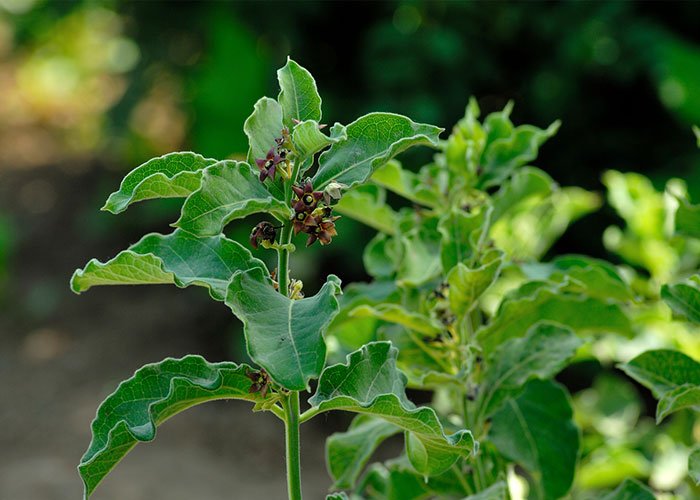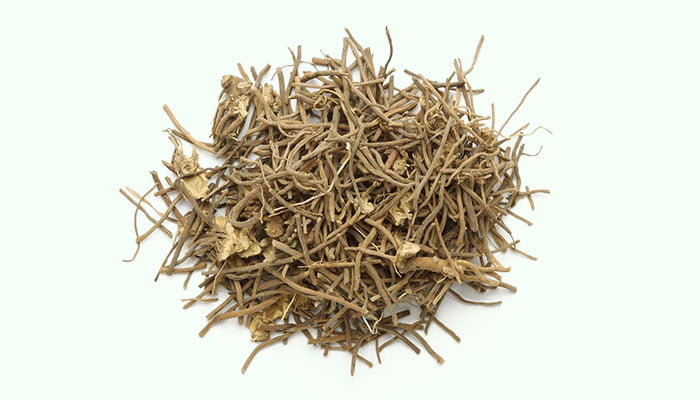What Is Bai Wei
Bai Wei commonly known as Radix Cynanchi Atrati or Swallowwort Root is the root and rhizome of Cynanchum atratum or Cynanchum versicolor, which is a perennial herb belonging to the family Asclepiadaceae. It first appeared in <Shennong Ben Cao Jing> in the late Western Han Dynasty (about 100 BC).
There are about 300 species of Cynanchum, which are distributed in the tropical, subtropical, and temperate regions of eastern Africa, the Mediterranean region, and Eurasia.
Cynanchum atratum likes a warm and humid environment and often grows in riversides, wastelands, grasses, or ravines at an altitude of 100-1,800 meters. It can be found in China, Japan, and North Korea.

Cynanchum versicolor often grows in mountains, thickets, or riversides below 800 meters above sea level. It is distributed in Liaoning, Hebei, Henan, Shandong, Shanxi, and Anhui provinces in China.
In the spring and autumn of each year, people gather the roots and rhizomes of Cynanchum atratum or Cynanchum versicolor, remove their impurities, wash them in water, dry them in the sun, cut them into thin slices, and make them into Chinese herbal medicines.
Bai Wei contains C21 steroidal saponins such as cynanoside N, atratoglaucoside B, cynanoside A-M, cynanoside O, cynanoside S, cynanoside Q1-Q3, sublanceoside E1, cynascyroside C, atratoside A, atratoside B, cynanoside R1-R3, cynanoside P1-P5, AE,glaucogenin C, atratoglaucoside A, glaucogenin C-3-O-ɑ-D-thevetopyranoside, atratcynoside AC, atratcynoside DE, atratcynoside F, glaucoside A, glaucoside C, glaucoside H, sublanceoside L2 sublanceoside H2, glaucogenin C-3-Oglaucogenin -β-D-thevetopyranoside, cynanversicoside AG, glaucoside C, glaucoside H, glaucoside D, neocynaversieosidede.
In addition, it also contains volatile oils, alkaloids, stigmasterol, β-sitosterol, β-carotene, acetophenone derivatives, and benzophenone derivatives.
Generally, the brownish-yellow and fragile Bai Wei with a yellow-white cross-section, yellow heartwood, and a light odor is preferred.
According to <Compendium of Materia Medica>, the medicinal nature of Bai Wei is relatively cold, with a bitter and salty taste. It has a certain therapeutic effect on the pathological changes of the stomach, liver, and kidney meridians.
In traditional Chinese medicine, Bai Wei is used to clear asthenic fever and cool blood, promote urination and remove toxins, treat cough, fever, hematuria, urinary tract infection, nephritis, edema, bronchitis, rheumatic arthritis, gastroenteritis, pharyngitis, abscess, blood vessel Inhibitory syncope, sequelae of cerebral infarction, erythematous limb pain, tuberculosis, and snakebite. It is an important component of Nujin wan and Kunbao Wan.
Benefits
- Anti-inflammation, inhibiting croton oil-induced ear swelling in mice and improving ovalbumin-induced airway inflammation in mice.
- Anti-oxidation, scavenging DPPH free radicals and reducing Fe2+-tripyridyltriazine produced by Fe3+-tripyridyltriazine.
- Immunosuppression, inhibiting the proliferation of T lymphocytes in the spleen of mice induced by Con A.
- Down-regulating the level of tyrosinase, inhibiting the production of melanin and reducing pigmentation.
- Enhancing myocardial contractility, slowing down heart rate, and treating congestive heart failure.
- Alleviating symptoms in the later stage of febrile diseases, such as fever at night, chills in the early morning, hot flashes, and febrile sensation in the palms and soles.
- Treating persistent low fever, syncope, and fever caused by postpartum blood deficiency.
- Treating high fever, polydipsia, dizziness, and crimson tongue caused by warm pathogens attacking nutrient system.
- Inducing diuresis, relieving difficult and painful urination, and treating hematuria.
- Removing heat toxins, relieving skin swelling and pain, and treating sores and abscesses caused by heat toxins.
- Clearing lung heat, relieving throat swelling and pain, cough caused by lung heat.
- Nourishing yin, treating fever, dry throat, thirst, and irritation caused by yin deficiency.
- Inhibiting the proliferation of HeLa cells and SGC-7901 human gastric cancer cells in vitro, and inducing apoptosis of human lung cancer cells A549.
- Cynatratoside A has a significant protective effect on autoimmune hepatitis (AIH) induced by Concanavalin A (Con-A).
- Cynatroside B can inhibit the activity of acetylcholinesterase (AChE), enhance the cognition of mice, and alleviate memory impairment in Alzheimer’s disease.
- Its ethanol extract can inhibit Penicillium italicum and Streptococcus pneumoniae.
- Its alkaloids and steroidal saponins can be used as selective inhibitors of the tobacco mosaic virus, inhibiting the expression of viral genome RNA.
Combinations
- It can be used in combination with Mu Tong (Caulis Akebiae), Hua Shi (Talcum), Shi Wei (Folium Pyrrosiae), etc. to treat painful urination and dysuria.
- It can be used in combination with Jin Yin Hua (Flos Lonicerae), Jie Geng (Radix Platycodi), and Shan Dou Gen (Radix Sophorae Tonkinensis), etc. to clear heat and remove toxin, and relieve throat swelling and pain.
- It can be used in combination with Yu Zhu (Rhizoma Polygonati Odorati), Dan Dou Chi (Fermented Soybeans), Bo He (Mentha), etc. to alleviate fever, dry throat, thirst, and irritation caused by yin deficiency.
- It can be used in combination with Ren Shen (Radix et Rhizoma Ginseng), Dang Gui (Radix Angelicae Sinensis), Zhi Gan Cao (Radix Glycyrrhizae Preparata), etc. to treat blood vessel Inhibitory syncope.
- It can be used in combination with Ze Lan (Lycopus Lucidus), Jin Yin Hua (Flos Lonicerae), Xuan Shen (Radix Scrophulariae), Bai Shao (White Peony Root), etc. to relieve erythematous limb pain.
Side Effects
- At present, there are no reports in the literature that Bai Wei has a toxic effect.
- Modern research shows that overdose of it may cause nausea, vomiting, salivation, palpitations, dizziness, headache, diarrhea, and other uncomfortable symptoms.
Precautions and Warnings
- The dosage of Bai Wei should be controlled between 4.5-9g.
- It can be made into a decoctions, pills, or mashed for external use.
- People who are allergic to Bai Wei should not take it.
- Patients with cardiac atrioventricular block, acute endocarditis, hypokalemia, hypercalcemia, or acute myocardial infarction should not take it.
- It should not be used together with calcium salt drugs or sodium-saving and potassium-removing drugs.
- Patients with deficiency cold in the spleen and stomach should not take it.
- Patients with poor appetite or loose stools should not take it.
- Pregnant women and children should not take it.
